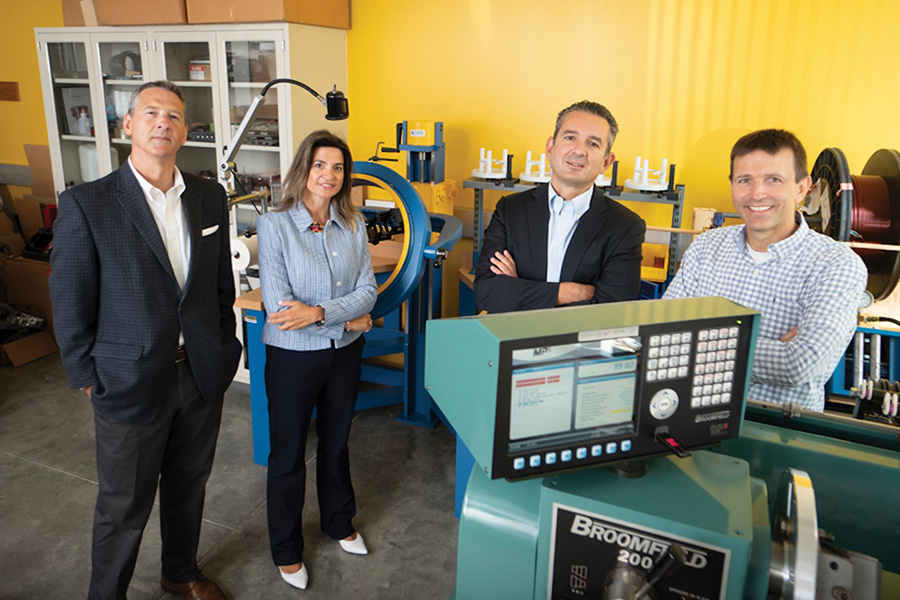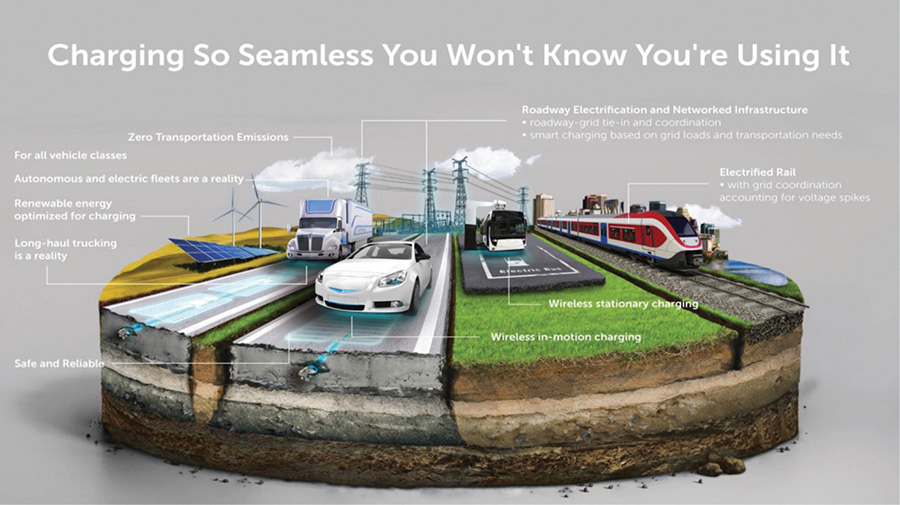Electric roads: Tackling the roadblocks

One of the most “electrifying” ideas for electric vehicles (EVs) is to dispel the worries drivers have about how far they can go on a charge, also known as “range anxiety,” by bringing the charge directly to them via the roadway on which they are traveling. This is a goal for the National Science Foundation’s Engineering Research Center for Advancing Sustainability through Powered Infrastructure for Roadway Electrification (ASPIRE) — to develop innovative dynamic (in-motion) wireless power transfer (DWPT) technology.
A number of technological innovations are needed for a successful deployment of DWPT technology, in areas like electromagnetic design optimization techniques, magnetic materials, power electronic topologies and components, and specialty cables. Novel solutions are required in pavement design and maintenance, integration with the power grid, cybersecurity, and communication between a vehicle and the infrastructure. We also must innovate around such areas as batteries, electromagnetic emissions, alignment techniques, and metering and billing.
Purdue is working with Utah State and other universities, companies, and communities on the ASPIRE initiative to develop this pioneering wireless charging infrastructure technology. For example, my team, in close collaboration with ASPIRE colleagues, is working on a key aspect of roadway electrification: the design of the power transmitter and receiver coils, including considerations for placing them inside pavement, specifically targeting the needs of power-hungry heavy-duty vehicles moving at highway speeds.

There also are challenges beyond the narrow scope of the technical design and deployment of individual components. A central one is the increased load on the electric grid that will be created by widespread use of EVs. This additional load will depend on the type of technology and the adoption level. For instance, the power draw from an extremely fast charging station is quite different from that of a slow (overnight) charge-at-home system and from that of a DWPT system. In addition, we should be thinking in terms of the total energy consumption and where all this energy will come from, so as to plan how to expand the generation mix of the power grid.
A lot of work already has been done regarding how to manage this additional load, especially for stationary, wired charging — such as by investing in new infrastructure, and by controlling when the charging takes place through special pricing schemes to mitigate the technical and financial stress as much as possible. The new EV load also will represent a tremendous growth and revenue opportunity for electric utilities. However, it is critical to power this new load by investing in renewable energy resources or low-carbon fuels, so as to reduce overall CO2 emissions.

The deployment of DWPT infrastructure will require major grid-side transmission and distribution investments to bring electric power to the roads. Existing substations may not suffice in capacity, and rural traffic corridors may not be close to electrical transmission. As a crude estimate, the electrical and civil capital costs could be on the order of millions of dollars per mile for system designs that can meet the needs of heavy-duty vehicles at high adoption levels.
At first glance, this cost estimate may seem prohibitively high. However, our initial studies indicate that, in the long term, the investment will pay off handsomely directly and indirectly to the broader economy (e.g., to communities that would benefit from decreased pollution and improved quality of life). Deploying this technology at scale will take years, so we should be strategic in our decisions, and do everything we can to bolster adoption with appropriate policies and incentives.
There also are regulatory barriers to deploying electric roadways. The U.S. Code 23 Section 111 (Agreements relating to use of and access to rights-of-way — Interstate System) prohibits commercial use of the Interstate Highway System as we envision for selling electricity to DWPT-EVs. At the state level, there may be regulatory hurdles related to the sale of electricity, which would preclude roadway operators from powering the EV load. Additionally, we must develop appropriate technical standards for DWPT technology, without which the commercial ecosystem of fully interoperable charging components and products cannot thrive.
Once these roadblocks are removed, electric roadways can contribute to economic development, in rural communities as well as nationwide. This statement is especially true if we consider investing in renewable energy in the vicinity of electric roadways, which I call “green highways.” The ideal case would be powering our transportation sector by 100 percent locally-sourced renewable energy, while minimizing investments in new transmission, creating jobs, providing income to rural landowners, and lowering the price of electricity. In this way, we can make DWPT-EVs even more competitive to operate than their internal combustion engine counterparts.

Dionysios Aliprantis, PhD
Professor
Elmore Family School of Electrical and Computer Engineering
ASPIRE Faculty Team Member
College of Engineering
Purdue University
Source: Purdue Engineering Review
